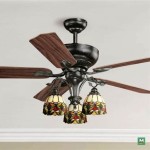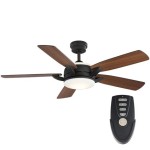Popcorn ceilings, also known as textured ceilings, are a popular feature of many homes, especially those built in the ’70s and ’80s. But over time, these ceilings can look outdated or just plain ugly. If you want to update the look of your home, painting your popcorn ceiling is a great way to do it.
Painting a popcorn ceiling can be a daunting task. There are a few different techniques to choose from, and it’s important to get it right the first time. In this article, we’ll look at the different steps involved in painting a popcorn ceiling and everything you need to know to get the job done right.
Preparing the Ceiling
The first step in painting a popcorn ceiling is to make sure the surface is ready. This means removing any dust and dirt, and making sure the ceiling is dry. To do this, use a vacuum cleaner with an attachment designed for ceilings, then wipe the surface with a damp cloth.
It’s also important to make sure the ceiling is properly sealed. This will help protect it from moisture, which can cause paint to peel or blister. To seal the ceiling, use an acrylic sealant made specifically for popcorn ceilings. Apply it with a paint roller and let it dry completely before moving on to the next step.
Choosing the Right Paint
When it comes to painting a popcorn ceiling, it’s important to choose the right paint. Many people think that any paint will do, but this isn’t the case. The best paint for popcorn ceilings is a flat latex or acrylic paint. This type of paint won’t leave brush strokes and will adhere to the textured surface better than other types of paint.
When choosing a color, it’s best to stick with light colors, as dark colors can make the popcorn texture more visible. If you’re looking to cover up an existing paint job, you may want to use a primer to ensure better adhesion. Once you’ve chosen the right paint, it’s time to start painting.
Painting the Ceiling
When it comes to painting a popcorn ceiling, the key is to use a light touch. Heavy pressure can cause the popcorn texture to come off, leaving a patchy or uneven surface. Start by dipping the brush into the paint and then dabbing it onto the ceiling. You should only use a small amount of paint at a time, as too much can cause the texture to become matted down.
It’s also important to use a brush with soft bristles. Hard bristles can cause the texture to come off, so it’s best to avoid them. Once you’ve painted the entire ceiling, let it dry completely before adding a second coat if necessary.
Finishing the Job
Once the paint is dry, it’s time to finish the job. This involves trimming any excess paint around the edges of the ceiling and cleaning up any drips or splatters. Use a putty knife to scrape off any excess paint and a damp cloth to wipe away any dirt or dust.
When you’re finished, your popcorn ceiling should look like new. Painting a popcorn ceiling isn’t an easy job, but with the right techniques and materials, it can be done. Now that you know the basics of popcorn ceiling painting, you can get started on your own project.

![How To Paint Popcorn Ceiling [The Best Way with Roller or Sprayer] Paint Sprayer Guide](https://i2.wp.com/paintsprayerguide.com/wp-content/uploads/2019/05/Choosing-the-Best-Popcorn-Ceiling.jpg)







:max_bytes(150000):strip_icc()/PaintingPopcornCeiling-de586720c664484ba51e4cf364c45500.jpg)





Related Posts








